August 5, 2025 by 100XBuilds Team
Luxury Market Trends: Client Preferences Driving Change
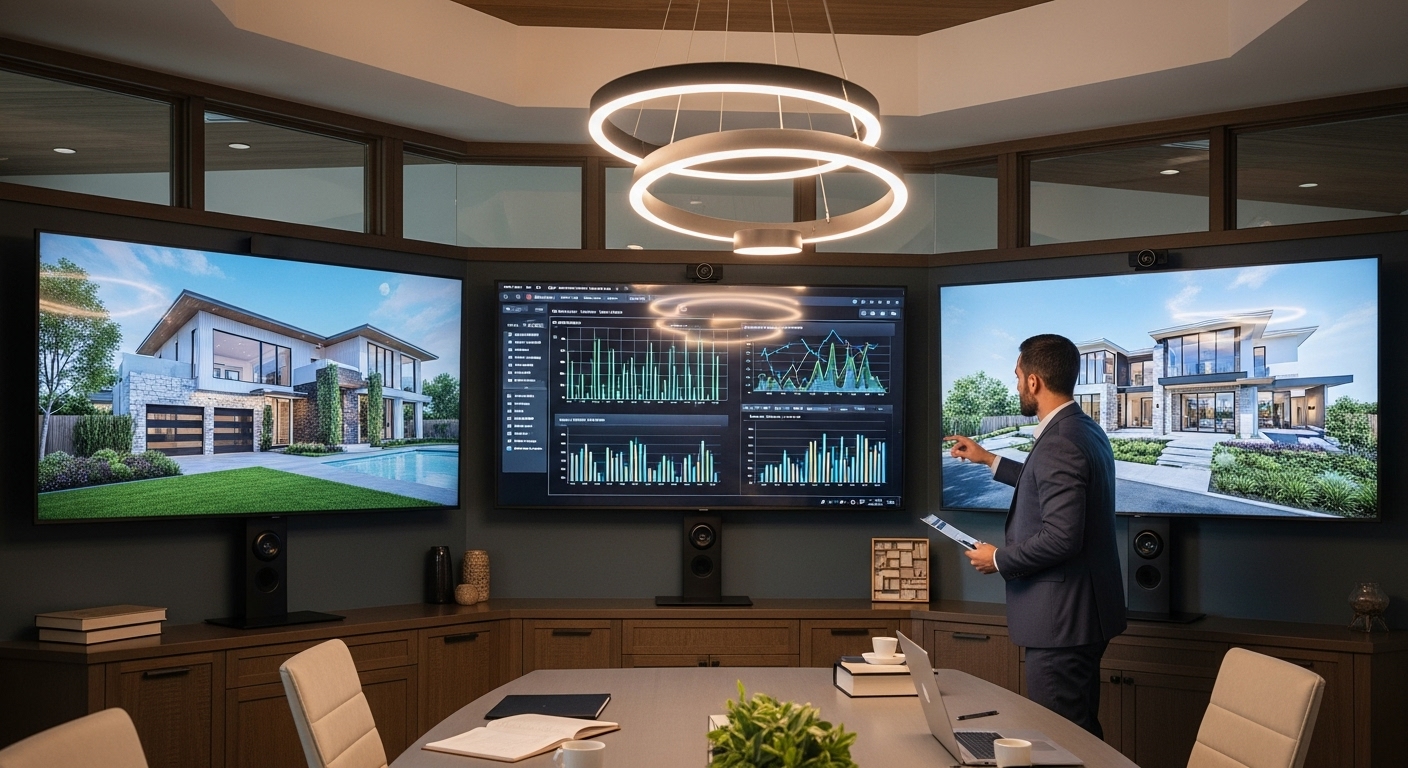
"Luxury builders who adapted to wellness-focused design trends saw average project values increase by 23% in 2024, while those who ignored shifting preferences experienced a 15% decline in new contracts."
The luxury home market has undergone its most dramatic transformation in decades. What worked for $5M+ builders just three years ago now feels antiquated to today's discerning clientele. The builders thriving in this new landscape aren't just following trends—they're anticipating them, reshaping their entire approach to meet evolving client expectations.
Recent data from our luxury builder network reveals a stark reality: 68% of high-net-worth buyers now prioritize different features than they did pre-2022. The builders who recognized this shift early are commanding premium pricing and shorter sales cycles, while those clinging to traditional approaches are struggling to maintain margins.
The New Luxury Hierarchy: What Drives Today's $5M+ Buyers
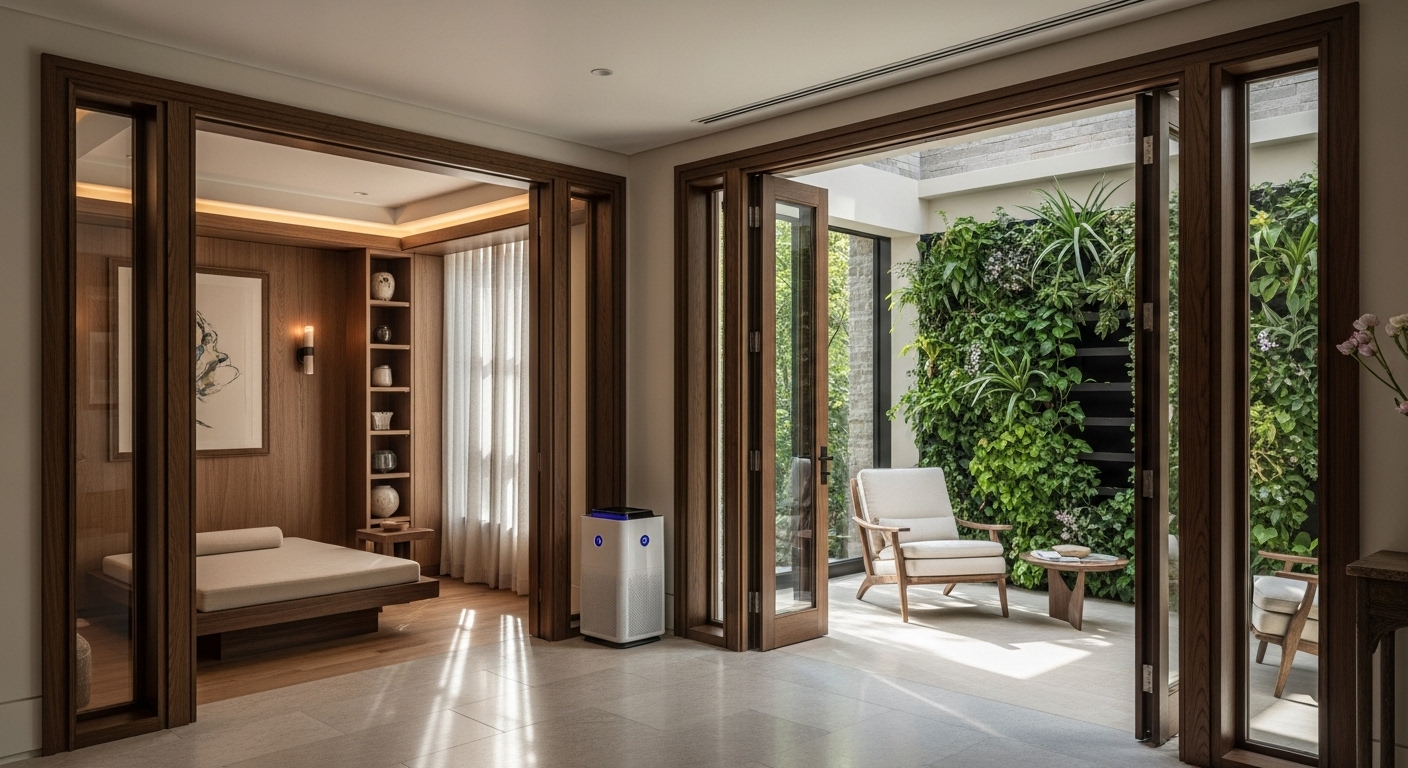
The traditional luxury markers—marble countertops, grand staircases, and oversized master suites—no longer guarantee client satisfaction. Today's affluent buyers operate from a completely different value system, one that prioritizes experience over exhibition.
Wellness integration has become the primary differentiator. Builders reporting the strongest performance in 2024 integrated health-focused features that go far beyond basic air filtration. We're seeing circadian lighting systems that adjust throughout the day, meditation rooms with specialized acoustics, and even dedicated spaces for cryotherapy and infrared saunas.
One builder in Scottsdale increased their average project value from $4.2M to $5.8M by repositioning their homes around "longevity living." Every design decision—from the placement of windows to maximize natural light exposure to the integration of grounding systems that connect residents to the earth's electrical field—centered on enhancing the homeowner's physical and mental well-being.
Technology invisibility represents another seismic shift. While smart home features remain essential, today's luxury buyers demand seamless integration that doesn't announce itself. The most successful builders are investing in infrastructure that supports advanced automation while maintaining clean, uncluttered aesthetics.
Sustainability as status has evolved beyond simple energy efficiency. High-net-worth buyers now view environmental responsibility as a reflection of their values and forward-thinking mindset. Builders incorporating regenerative design principles—homes that actually improve their environmental impact over time—are commanding 18% higher margins than those offering basic green features.
Demographic Disruption: The Millennial Luxury Buyer Revolution
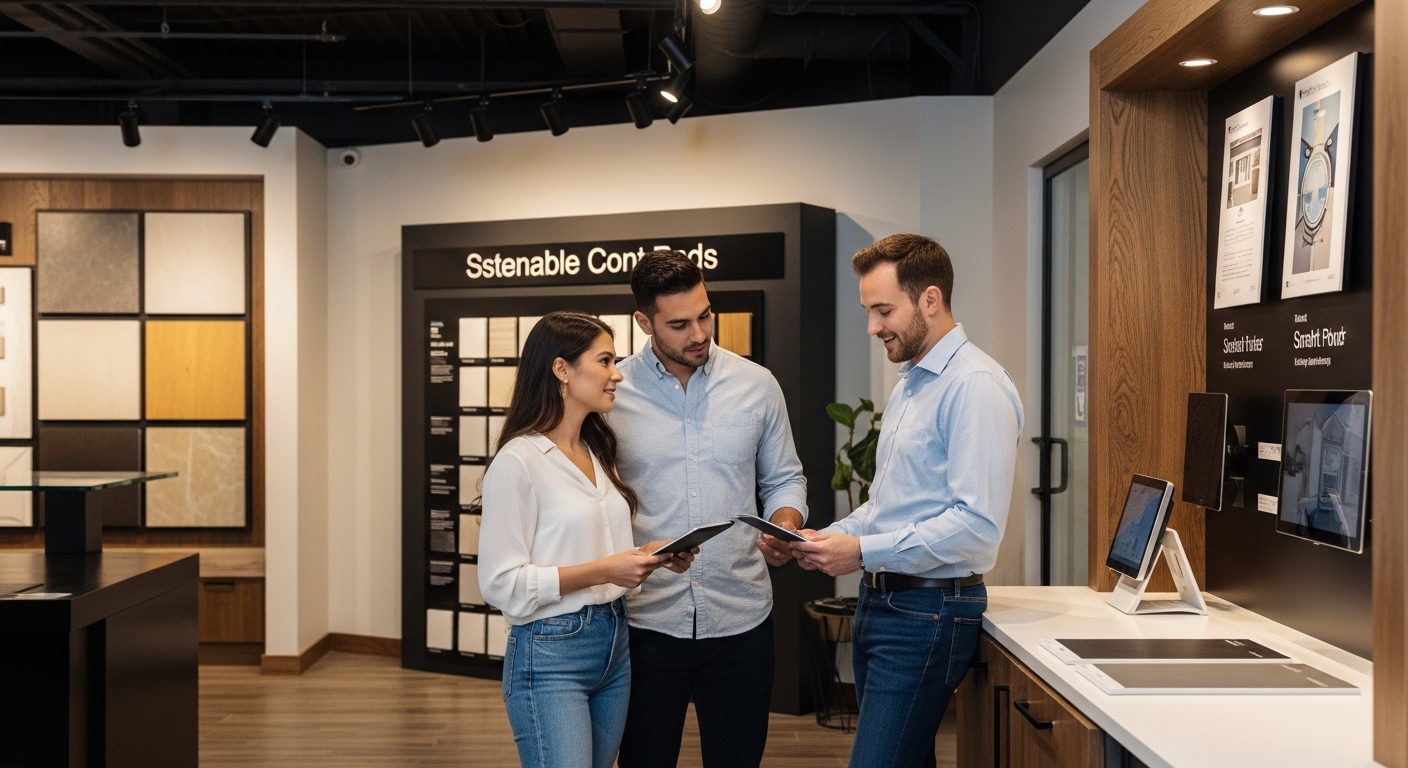
The most significant market shift isn't about features—it's about who's buying. Millennial buyers now represent 43% of luxury home purchases over $3M, and their preferences are reshaping the entire industry.
This demographic brings fundamentally different expectations. They've grown up with technology that adapts to them, not the other way around. They value experiences over possessions, sustainability over excess, and authenticity over ostentation.
Experience-centric design has become paramount. Instead of formal dining rooms that get used twice a year, millennial luxury buyers want flexible spaces that can transform based on their needs. One builder in Austin redesigned their standard floor plans to include "transformation zones"—spaces that can function as a yoga studio in the morning, a co-working space during the day, and an entertainment area in the evening.
Outdoor living integration has evolved beyond simple patios and pools. Today's luxury buyers want outdoor spaces that function as true extensions of their homes. Builders are incorporating outdoor kitchens with restaurant-grade equipment, climate-controlled outdoor rooms, and even outdoor home theaters with weather-resistant technology.
The financial implications are substantial. Builders who've adapted their designs to millennial preferences report 31% faster sales cycles and 22% higher profit margins compared to those still designing for traditional luxury buyers.
The Wellness Revolution: Health as the Ultimate Luxury
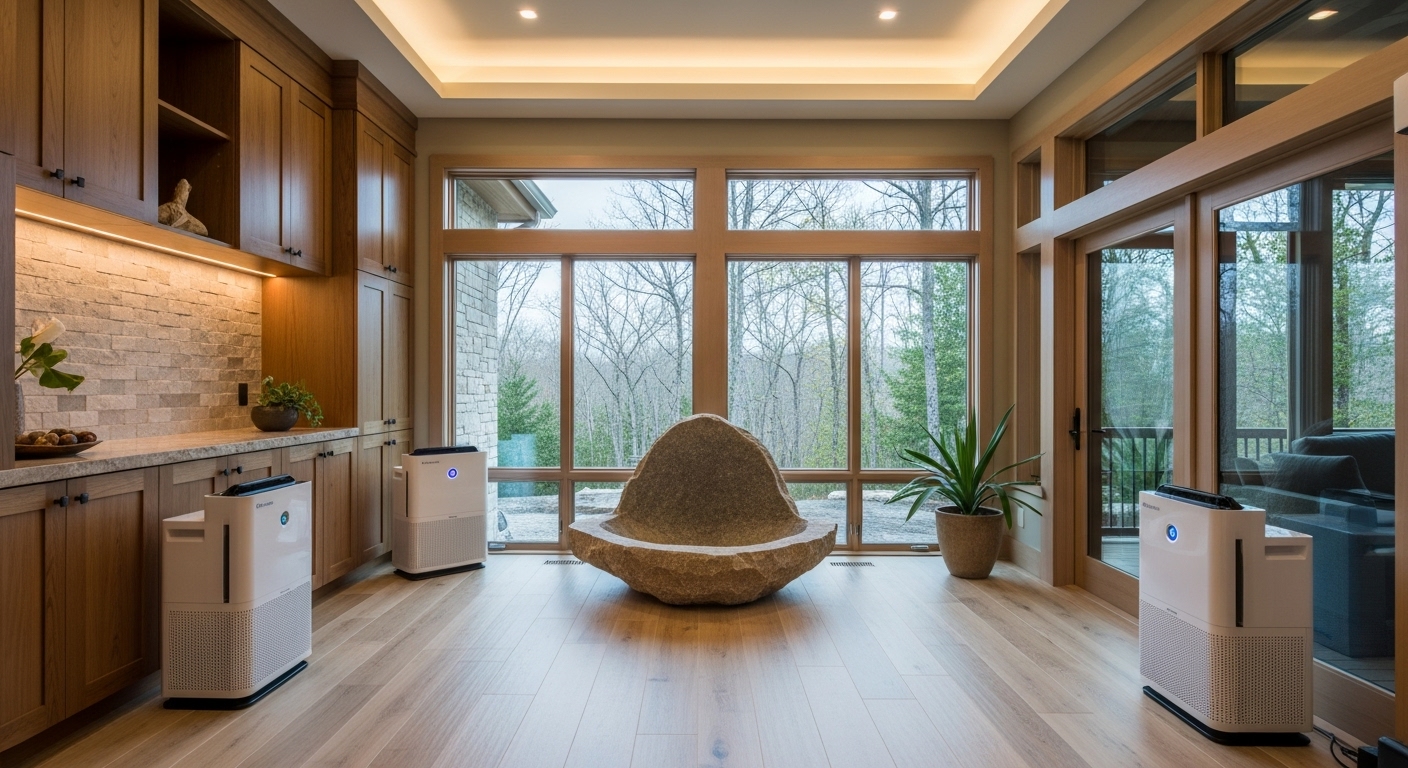
The pandemic accelerated a trend that was already emerging: the prioritization of health and wellness in home design. But today's wellness integration goes far beyond home gyms and air purifiers.
Biophilic design principles are becoming standard in luxury construction. Builders are incorporating living walls, natural water features, and materials that change with the seasons. One builder in Marin County increased their project values by 28% by integrating what they call "nature immersion architecture"—designs that blur the boundaries between indoor and outdoor spaces.
Air and water quality systems have evolved into sophisticated health infrastructure. The most successful builders are installing medical-grade air purification systems, structured water systems, and even electromagnetic field (EMF) shielding. These features, once considered fringe, are now expected by health-conscious luxury buyers.
Circadian health optimization represents the cutting edge of wellness design. Builders are incorporating lighting systems that support natural sleep cycles, using materials that don't off-gas harmful chemicals, and even positioning homes to optimize natural light exposure throughout the day.
The numbers speak for themselves: homes with integrated wellness features are selling 40% faster than traditional luxury homes and commanding premiums of 15-25% over comparable properties without these features.
Technology Integration: The Invisible Infrastructure Revolution
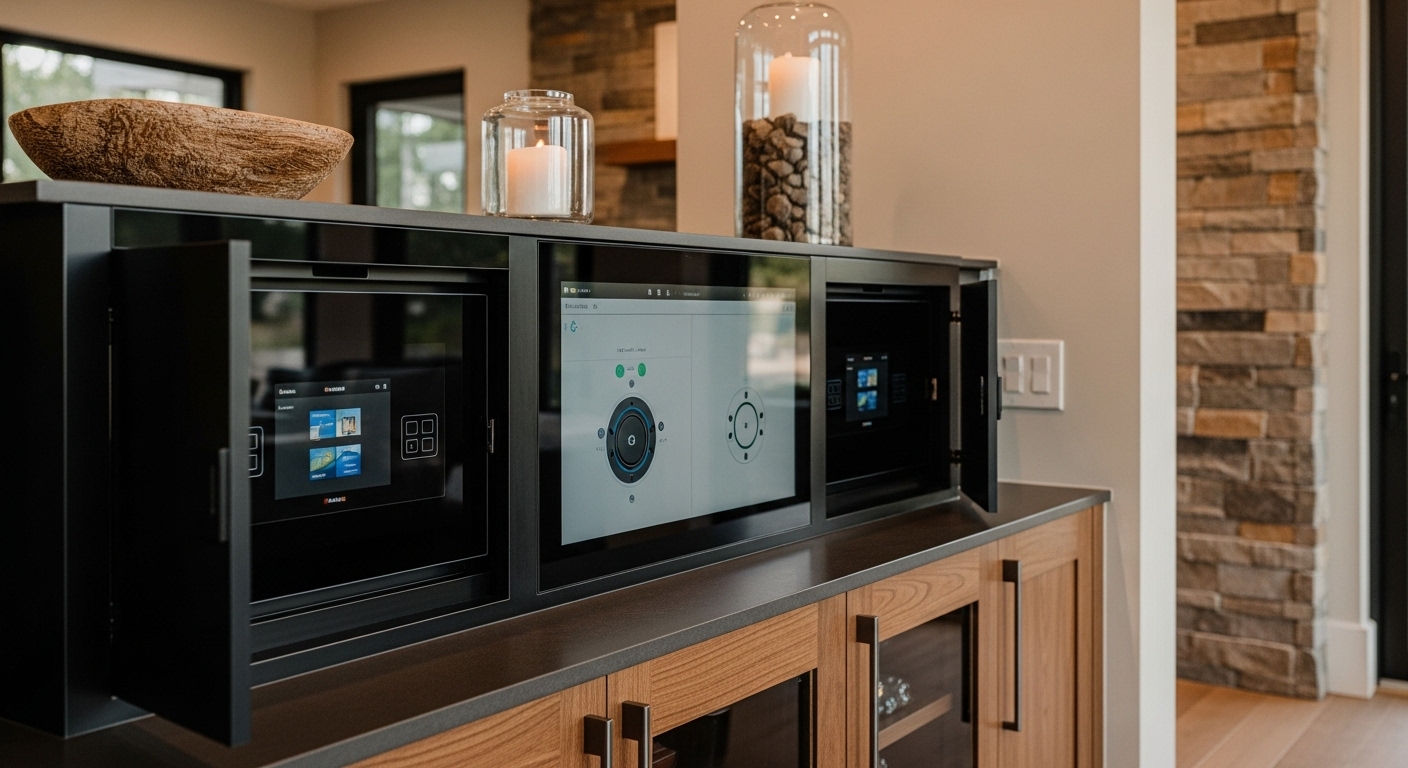
The luxury technology landscape has matured beyond flashy gadgets to sophisticated, invisible systems that anticipate needs before they're expressed. Today's affluent buyers expect their homes to be intelligent without being intrusive.
Predictive automation has replaced reactive smart home systems. The most advanced luxury homes now use AI to learn family patterns and adjust everything from lighting and temperature to security systems and even meal preparation timing. One builder in Silicon Valley has partnered with technology companies to create homes that can predict when residents will arrive home and prepare the environment accordingly.
Health monitoring integration is becoming standard. Luxury homes now incorporate sensors that monitor air quality, humidity, and even the presence of allergens, automatically adjusting systems to maintain optimal conditions. Some builders are even integrating sleep monitoring systems that adjust bedroom environments to optimize rest quality.
Privacy and security infrastructure has evolved to address new digital threats. Luxury buyers are demanding homes with built-in cybersecurity systems, secure communication networks, and even Faraday cage rooms for complete digital privacy.
Builders investing in these advanced technology integrations report 35% higher client satisfaction scores and 89% client referral rates compared to those offering basic smart home features.
Sustainability Sophistication: Beyond Green Building
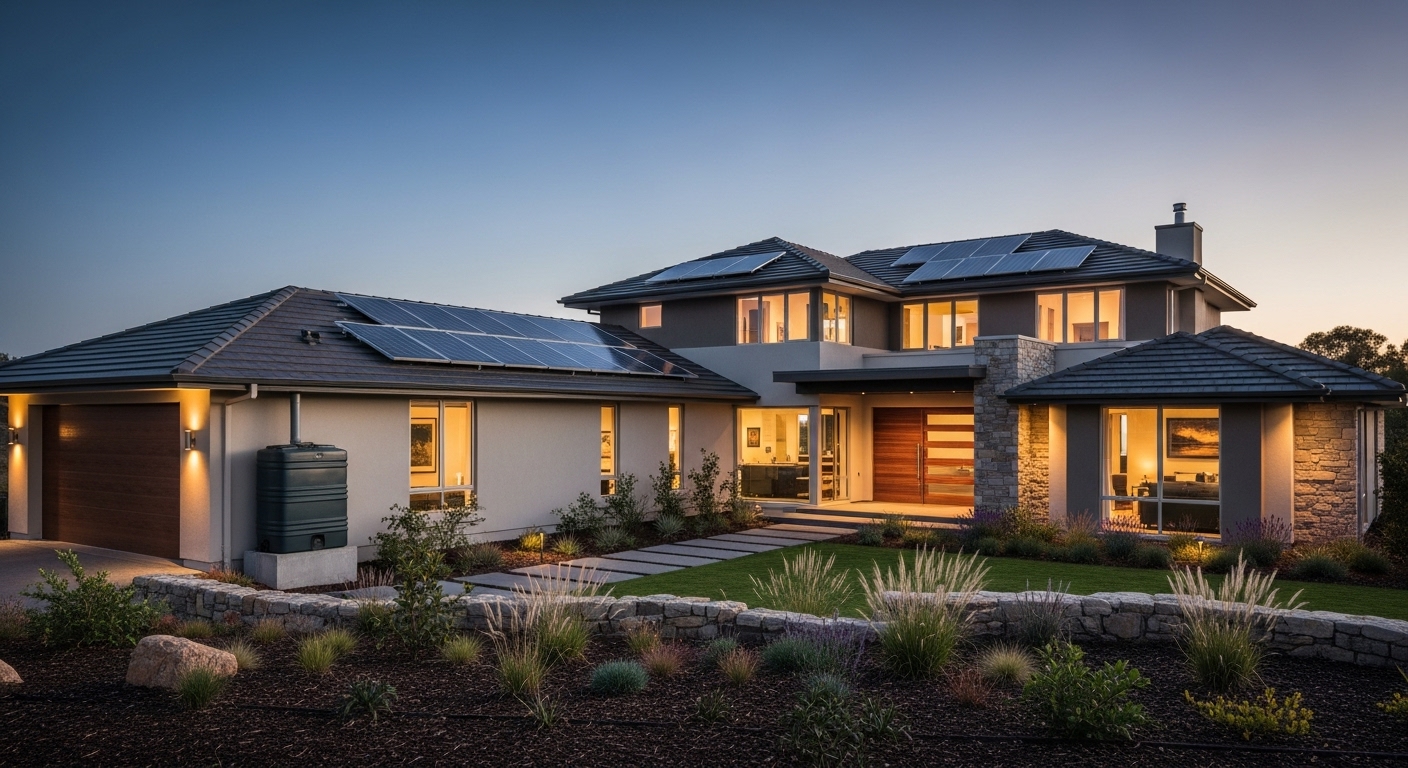
Environmental consciousness among luxury buyers has evolved from nice-to-have to non-negotiable. But today's sustainability expectations go far beyond LEED certification and solar panels.
Regenerative design principles are becoming the new standard. Luxury buyers want homes that don't just minimize environmental impact but actually improve their surroundings over time. This includes everything from soil restoration landscaping to carbon-negative building materials.
Energy independence has become a status symbol. The most successful luxury builders are creating homes that generate more energy than they consume, with sophisticated battery storage systems and even micro-grid capabilities. One builder in Colorado has developed a signature approach they call "energy abundance architecture," creating homes that can operate completely off-grid while maintaining full luxury amenities.
Water stewardship has evolved beyond conservation to regeneration. Luxury homes now incorporate rainwater harvesting systems, greywater recycling, and even atmospheric water generation systems that can produce drinking water from air humidity.
The financial impact is significant: homes with advanced sustainability features are commanding 20% higher resale values and attracting buyers willing to pay premiums of up to 30% for truly regenerative properties.
Flexible Living: Adaptability as the New Luxury Standard
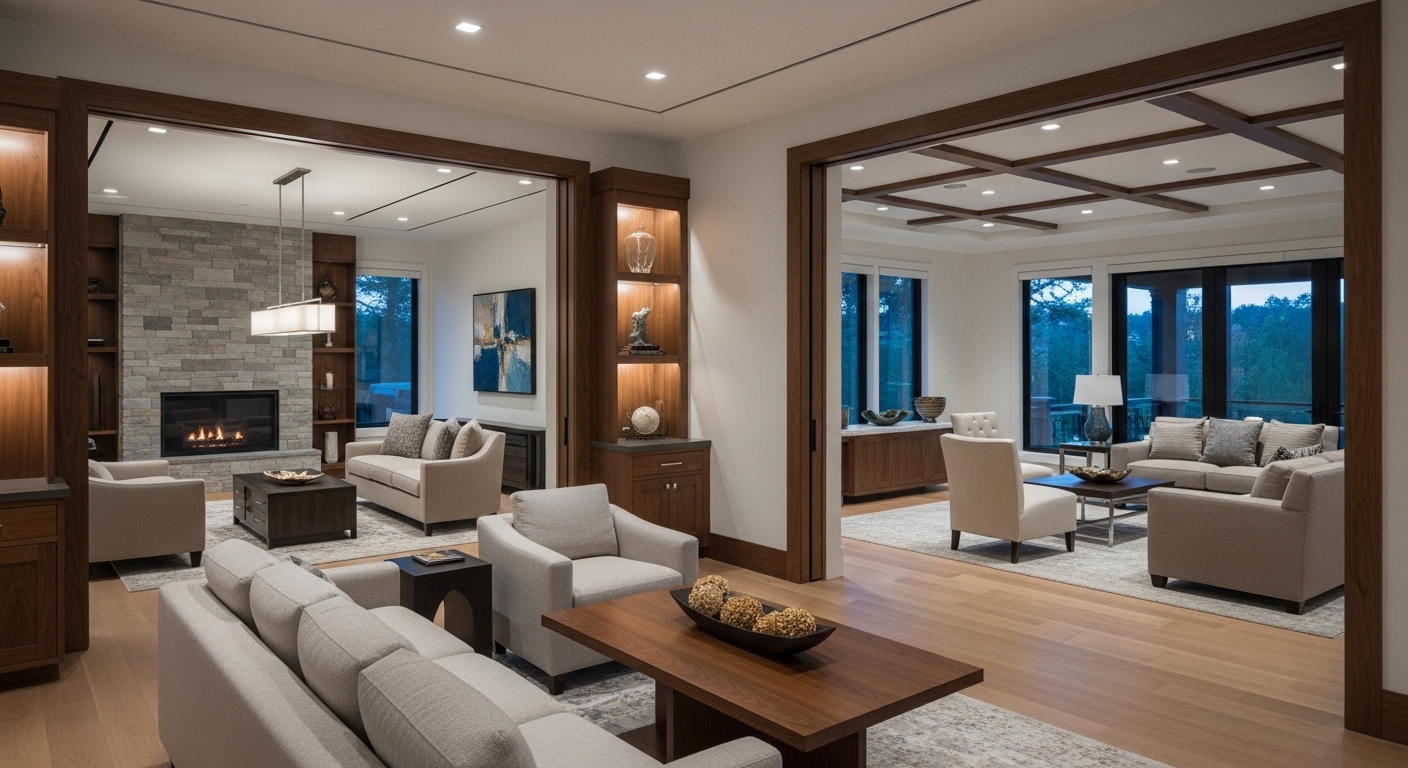
The concept of fixed-function rooms is becoming obsolete in luxury home design. Today's affluent buyers want spaces that can adapt to their changing needs, whether that's accommodating remote work, multi-generational living, or evolving lifestyle preferences.
Modular design systems are gaining traction among forward-thinking builders. These systems allow homeowners to reconfigure spaces without major construction. Moveable walls, transformable furniture systems, and flexible infrastructure are becoming standard features in luxury homes.
Multi-generational accommodation has become essential as family structures evolve. Luxury buyers are requesting homes that can comfortably accommodate aging parents or adult children while maintaining privacy and independence for all residents.
Work-from-home optimization has evolved beyond simple home offices. Luxury buyers want dedicated spaces for video conferencing, podcast recording, and even live streaming, complete with professional lighting and acoustic treatment.
Builders offering flexible design solutions report 45% higher client satisfaction and 25% more referrals compared to those building traditional fixed-function homes.
The Personalization Premium: Mass Customization in Luxury
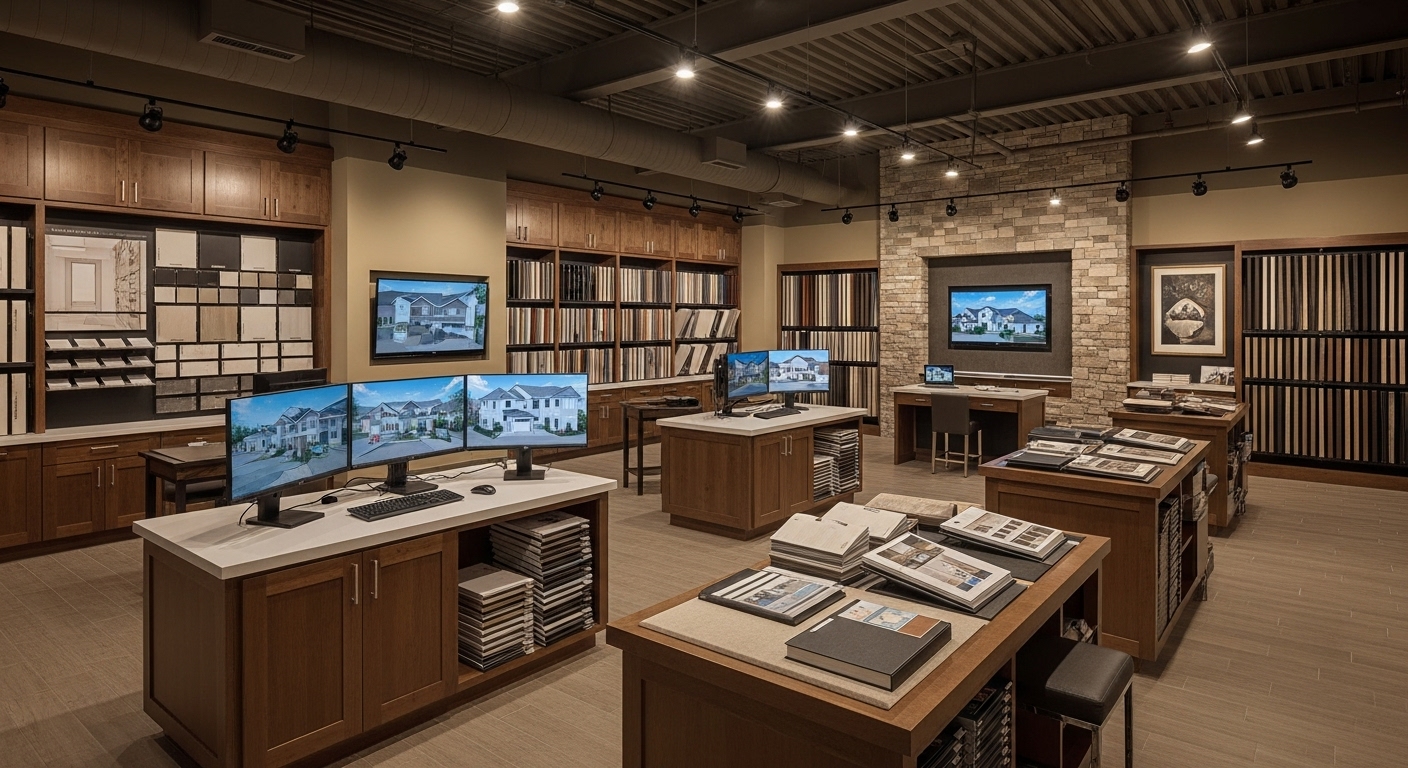
Today's luxury buyers don't want to choose from a menu of options—they want to create something uniquely theirs. This demand for personalization is driving builders to develop new approaches to customization that maintain efficiency while delivering truly bespoke results.
Digital design collaboration has revolutionized the customization process. The most successful builders are using virtual reality and augmented reality to allow clients to experience their homes before construction begins, making real-time adjustments to everything from room layouts to material selections.
Artisan partnerships are becoming a key differentiator. Builders are developing relationships with local craftspeople, artists, and specialty manufacturers to offer truly unique features that can't be found elsewhere.
Lifestyle integration goes beyond aesthetic preferences to incorporate the client's specific activities and interests. Whether it's a wine collector, an art enthusiast, or a fitness devotee, luxury builders are creating spaces that reflect and enhance their clients' passions.
The builders excelling at personalization are commanding premiums of 25-40% over standard luxury offerings and achieving client satisfaction scores above 95%.
Regional Variations: Adapting Trends to Local Markets
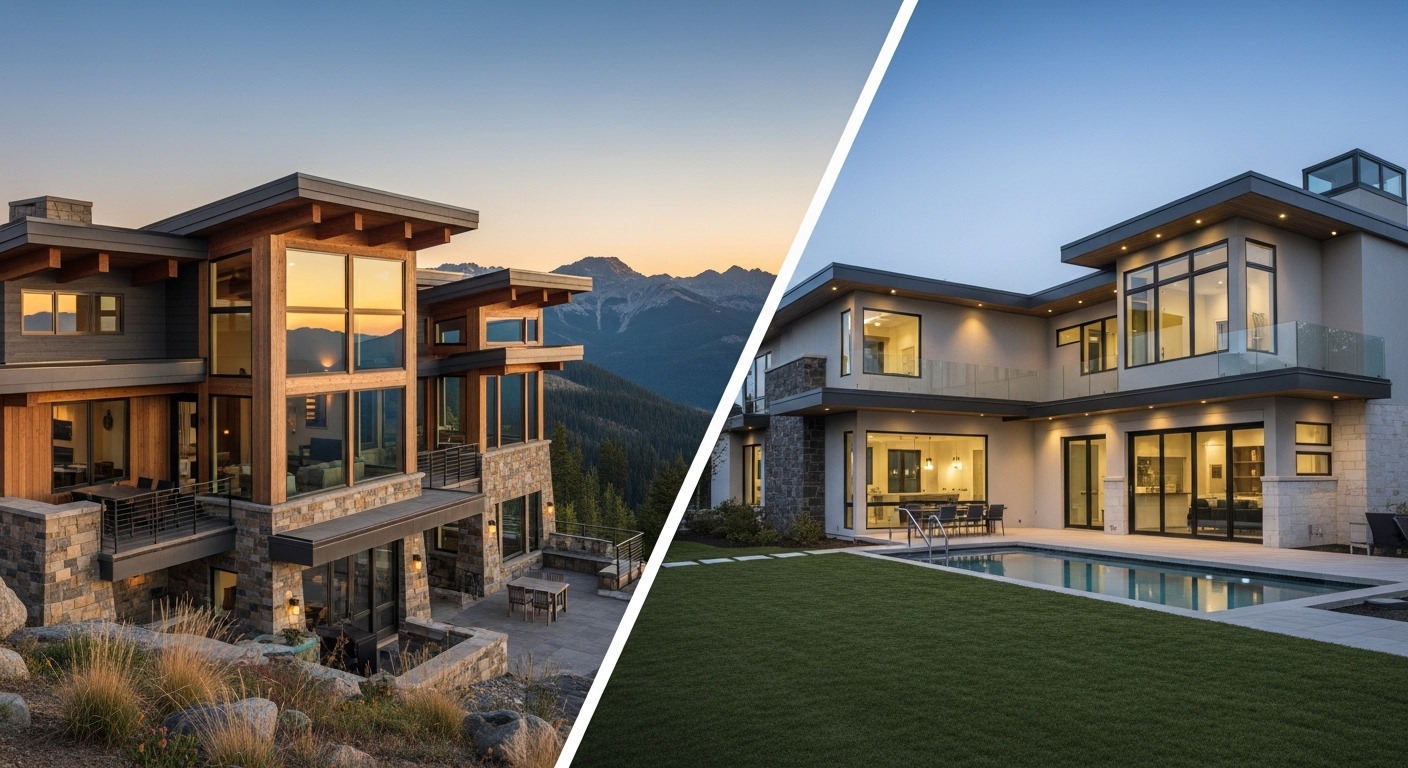
While overarching trends shape the luxury market, successful builders understand that implementation must be tailored to regional preferences and environmental conditions.
Climate-responsive design has become more sophisticated as extreme weather events increase. Luxury buyers in hurricane-prone areas want homes that can withstand Category 5 storms while maintaining luxury amenities. In fire-prone regions, builders are incorporating advanced fire suppression systems and defensible space design.
Cultural integration varies significantly by region. Luxury buyers in the Southwest want homes that honor local architectural traditions while incorporating modern amenities. In the Northeast, buyers prefer designs that respect historical context while providing contemporary functionality.
Resource availability influences material choices and design approaches. Builders in water-scarce regions are pioneering advanced water recycling systems, while those in areas with abundant renewable energy are creating homes that can operate as energy-positive properties.
Understanding these regional nuances allows builders to command premium pricing while delivering homes that truly fit their local markets.
Investment Implications: Building for Future Value
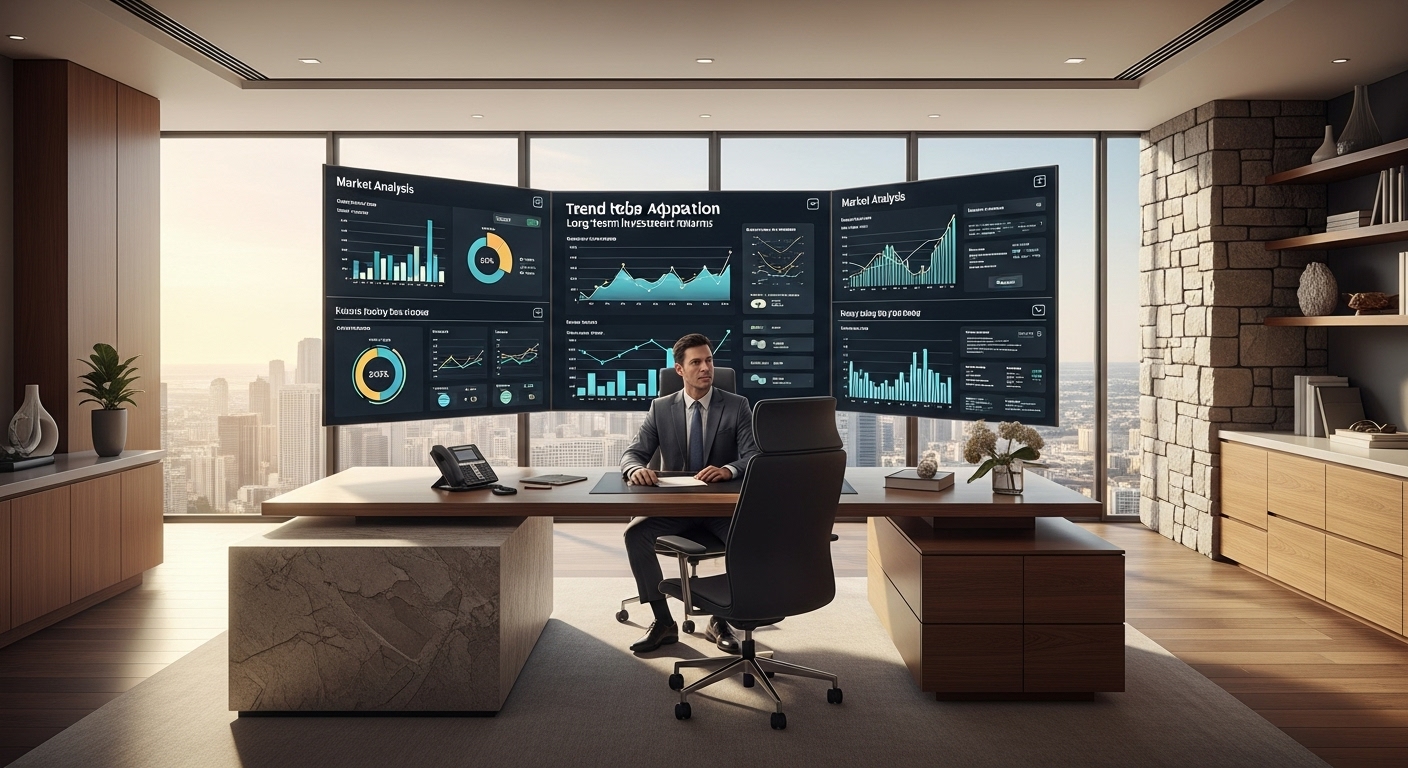
The most successful luxury builders aren't just responding to current trends—they're anticipating future shifts and building homes that will remain desirable and valuable for decades to come.
Future-proofing infrastructure has become essential. This includes everything from electrical systems that can handle increasing technology demands to structural designs that can accommodate future modifications without major reconstruction.
Demographic preparation involves understanding how changing family structures and aging populations will affect luxury home needs. Builders are incorporating universal design principles and creating homes that can adapt to changing mobility needs.
Technology evolution planning requires building infrastructure that can support future innovations without requiring complete system overhauls. The most forward-thinking builders are installing conduit systems and power infrastructure that can accommodate technologies that don't yet exist.
Homes built with future adaptability in mind are maintaining their value better and selling faster in resale markets, with some properties actually appreciating faster than the overall luxury market.
Implementation Strategy: Adapting Your Business Model
The builders thriving in this new landscape share common characteristics: they've restructured their businesses around trend anticipation rather than trend following, they've invested in capabilities that allow rapid adaptation to changing preferences, and they've built teams that can deliver on increasingly sophisticated client expectations.
Market intelligence systems have become essential business infrastructure. The most successful builders are investing in formal trend monitoring, client preference research, and competitive analysis systems that allow them to spot shifts before they become mainstream.
Design flexibility requires new approaches to project management and team structure. Builders are developing modular design systems and standardized customization processes that allow them to deliver personalized results efficiently.
Vendor partnerships need to evolve to support new requirements. This includes relationships with technology integrators, wellness specialists, sustainability consultants, and artisan craftspeople who can deliver the specialized features today's luxury buyers demand.
The luxury home market will continue evolving at an accelerated pace. The builders who thrive will be those who view change as opportunity rather than disruption, who invest in understanding their clients' evolving needs, and who build businesses capable of rapid adaptation.
Your next luxury project should reflect not just current trends but anticipate future shifts. The question isn't whether your clients' preferences will continue evolving—it's whether your business will be ready to meet their changing expectations.
Ready to future-proof your luxury building business? Contact 100XBuilds today to discover how our market intelligence and strategic positioning services can help you stay ahead of luxury market trends and command premium pricing in an evolving marketplace.
